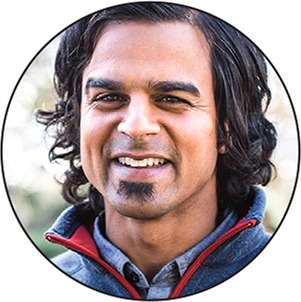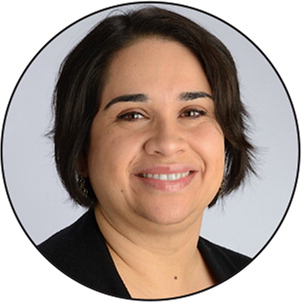
Am Fam Physician. 2023;108(2):192
Author disclosure: No relevant financial relationships.

8:00 a.m.
I drop my kids off at school on our family cargo bike and head to my clinic, a federally qualified health center in semi-rural Northern California, where I have worked for 13 years. My first patient is a double-booked nine-year-old girl whose right lower quadrant pain does not seem enough like appendicitis to warrant a trip to the ER. The mother, for whom I have cared since before her child was born (including her prenatal care), is reassured.
10:30 a.m.
A 60-year-old, semi-unhoused, hardworking woman is on my schedule for a knee injection, but my medical assistant reports that she has had two days of ankle swelling and pain. After a concerning examination, I perform point-of-care ultrasonography, and it shows a massive Achilles avulsion with a bony fragment mid-calf. I review the plan with our in-house podiatrist and call report to the ER.
12:30 p.m.
My first afternoon patient is a postal worker and new father who presents with de Quervain tenosynovitis that has been refractory to conservative care. I perform an ultrasound-guided injection and advise him about more effective splints.
4:30 p.m.
A 70-year-old Spanish-speaking retired landscaper with severe asthma walks in with dysuria and has glucose on his urine dip. His point-of-care A1C is 7.2. He agrees to walk after meals and make some diet changes. I prescribe metformin and educate him on the effects of prednisone (which he takes frequently for his severe asthma) on blood glucose.
5:00 p.m.
I debride the wound of an 80-year-old patient while he regales me with stories from his time managing a small hotel in Mendocino. When I am done, I join my clinic team for some Halloween video shots and then bike home through darkening skies.

7:00 a.m.
Today, I am working with interprofessional student teams. We have medicine and pharmacy learners, as well as some from psychology, nursing, physical therapy, occupational therapy, and nutrition.
9:00 a.m.
The pharmacy preceptor and I arrive at our first home visit for a patient who does not have reliable transportation. She requires supplemental oxygen but rarely uses it because she worries about tripping on the tubing. These home visits provide her with access to ongoing multidisciplinary care.
12:45 p.m.
We have a quick debrief with the student teams. They discuss the challenges of providing care in a patient's home. We talk about the use of our note template, which includes social determinants of health and other challenges that home-bound patients often face.
3:00 p.m.
A 26-year-old man presents with worsening depression and anxiety, despite taking both duloxetine (Cymbalta) and bupropion. He has had difficulty affording therapy. We offer integrated behavioral health in our clinic and find one of our psychologists. She provides suggestions for low-cost therapy options.
4:00 p.m.
We see a 34-year-old woman who went to the ER after she tripped on a curb. She hit her head but did not lose consciousness, and her head CT results were negative. She is struggling with headaches, nausea, and lightheadedness. Our occupational therapy colleagues discuss modifications she can try to manage the symptoms of her concussion, including physical and congnitive rest.
